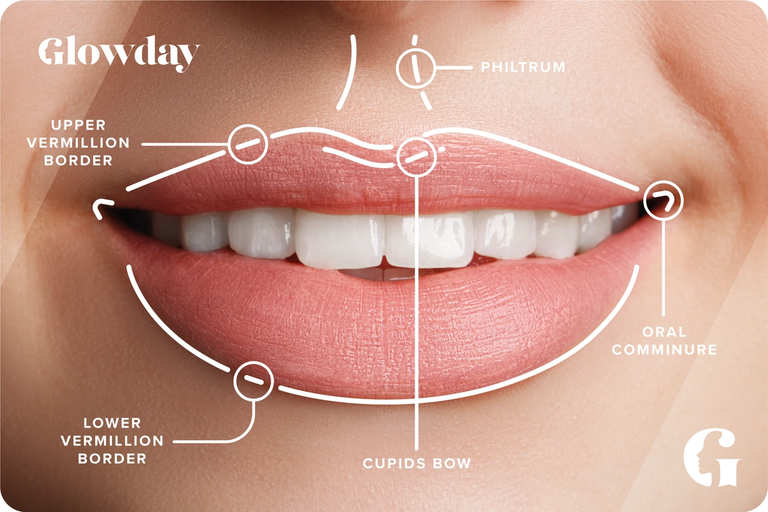
The best lip fillers in Bradford
We only feature the best lip filler practitioners near you who we have vetted to ensure that they’re medically qualified, trained and insured. Click on their profile to read their real patients' reviews and to see their before and after photos.
Lip fillers - At A Glance
Top Questions
Lip Filler Overview
Celebrity culture has both popularised and demonised lip fillers, and many people now mistakenly associate lip fillers with ‘trout pouts’ and ‘duck lips’. There is no denying the impact the Kardashian’s have had on the use of lip fillers.
As we age, lips naturally lose volume and plumpness. This is due to the overall decrease in collagen and elastin that occurs as we age. These are the proteins in our skin which provide structure, support and elasticity. This, coupled with a natural change in the shape of the lips as we age, means that our lips get thinner and smaller as we get older.
In the correct, highly-skilled, highly-qualified hands, lips can be enhanced and rejuvenated beautifully and subtly, balancing and harmonising the lips with the face, and ensuring you look great from all angles.
Not only can strategically placed dermal fillers help restore lost volume, they can also be used to redefine and reshape lips. Lip volume is best built up in stages, so it may be that you have smaller volumes of filler added over a period of months to get the desired outcome.
There are over 60 brands of dermal filler available in the UK. The two most commonly used for lips are Restylane® and Juvéderm®. These are both hyaluronic acid-based fillers which will last 6-12 months. Practitioners will likely use a range of brands for different treatments, based on their knowledge and experience.
Many dermal filler products are available with the addition of 0.3% lidocaine combined with the hyaluronic acid gel in the syringe. This provides instant relief from pain upon injection and removes the need for a separate nerve block or topical anaesthesia. However, practitioners want you to feel as comfortable as possible, so you will likely be offered a topical numbing cream or a dental block, depending on the treatment and preference of the practitioner.
There are products available which can dissolve hyaluronic acid fillers, so the effects of these fillers are not only temporary, but they can be reversed, if necessary. The products to dissolve fillers are prescription medicines and must be performed by an expert.
This Glowday Treatment Guide has been edited and medically verified by Andrew Rankin.
How do lip filler treatments work?
Most dermal fillers used in the UK contain hyaluronic acid. When injected into the skin, hyaluronic acid's hydrophilic (water-loving) tendencies, cause it to attract water, instantly filling out wrinkles and scars and adding volume and shape where necessary.
Hyaluronic acid is a naturally occurring substance within the body, which makes adverse reactions to it unlikely.
Practitioners are able to use a variety of techniques to administer fillers in a subtle way to reshape lips, add lost volume to ageing lips, treat lipstick lines and philtral columns. Lip fillers can also be used to address any asymmetry in lips, particularly clients with cleft palate.
Your practitioner will tailor the treatment to your specific lip and facial anatomy. The idea is to create a natural looking set of lips. Firstly, it is helpful to understand the anatomy of the lips and the terms your practitioner may use.

Your lip tissue is made up of compartments called tubercles. Boluses (balls) of filler can be placed into these tubercles to add volume and plumpness.
The border of your lips comprises of the cupid’s bow and the upper and lower vermillion border. These can be reshaped and defined using threads of filler.
Who can have lip fillers?
Lip augmentation using dermal fillers is suitable for all adults, regardless of race and gender.
How do you prepare for a lip filler treatment?
In the week before the treatment, avoid taking aspirin (unless prescribed by a doctor), ibuprofen, vitamin E and fish oil supplements. These may increase bleeding and bruising. You can take paracetamol.
You must inform your practitioner of any prescription medication you are taking.
What happens during a lip filler treatment?
What happens after a lip filler treatment?
After your treatment, you can go about your normal day.
Post-treatment advice may include:
- iced water soaks or ice packs to help to reduce swelling (although this is generally not required);
- the use of painkillers such as paracetamol, is often not required but may be used if needed for a few days after treatment;
- arnica (a homeopathic remedy) cream or tablets are sometimes recommended a few days before and a few days after treatment as there is some evidence that this can reduce bruising.
Bruising and swelling should go down after a couple of days but can persist for a week.
If you continue to experience excessive swelling, pain, skin colour changes or if any blistering occurs, you should contact your practitioner immediately.
Similarly, if you experience any delayed reactions such as lumpy redness occurring any time after treatment, you should contact the person who treated you immediately.
What are the side effects and risks of lip fillers?
Depending on the area being injected, the type of filler being used and the pain relief method being used, clients may find this procedure relatively painless to uncomfortable. Treatments around the nose and lips are usually more painful than other areas but most clients find filler treatments bearable.
You must discuss pain management options with your practitioner and let them know if you are finding the procedure too uncomfortable.
The obvious, immediate and most common side effect is slight bleeding after the needle has been inserted into the skin.
Other risks include bruising, tenderness, redness and swelling around the injection site. These signs may take 2-3 days to vanish completely, especially around the lips where there is little flesh and skin is tender.
Occasionally, a ‘bleb’ will occur. This is where the filler has been injected too superficially (close to the surface) and will need to be dissolved.
Rarely, allergic type reactions can occur after a filler treatment. These include prolonged redness, swelling, itching and/or hardness and bumps in the skin. Such signs may appear at some or all injection points. Sometimes, they can last several months or longer, but this is extremely unusual.
Another rare side effect is occlusions. This is where filler is accidentally injected into a blood vessel, creating a blockage. This presents as whitening of the skin, followed by the area turning greyish-purple. If left untreated, this can result in tissue loss in the affected area. There have been reports of this in lip and nose treatments.
One particular type of occlusion is an ocular occlusion. This is where a blood vessel supplying the eye gets blocked. This results in partial or complete blindness.
If you exhibit any symptoms of occlusion, you need to seek the advice of your practitioner and/or visit accident and emergency immediately. You will need to be prescribed emergency treatment medicines, which is why it is important that you have access to a practitioner who is able to prescribe medicine.
As with any skin treatment, injections should be avoided in areas where the skin is swollen or where infections are present - e.g. active acne.
If you have a history of cold sores, or fever blisters in the treated area, filler injections may result in break outs. In this case, your practitioner may recommend that you take a course of anti-viral medicine before treatment.
If you have a known allergy to hyaluronic fillers or any of the ingredients in the filler product, you must inform your practitioner. An alternative treatment will need to be carried out.
Dermal fillers have not been tested on pregnant women. No practitioner would carry out a filler treatment on a pregnant woman.
How much do lip fillers cost?
Costs vary depending mostly on the type of dermal filler used and the degree of filling and contouring required.
Generally, prices for dermal fillers are based upon the estimated number of syringes needed to obtain the required result. Syringes usually come in 1ml volumes.
Additionally, different filler brands such as Restylane®, Perlane®, Radiesse® and Juvederm® differ in price depending on the clinic and practitioner.
Hence, overall prices may vary from £200 to over £500 per treatment session.
When filling lips, it's key to note that you may be advised to have multiple sittings in order to get the required result.